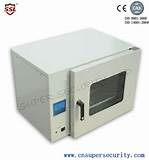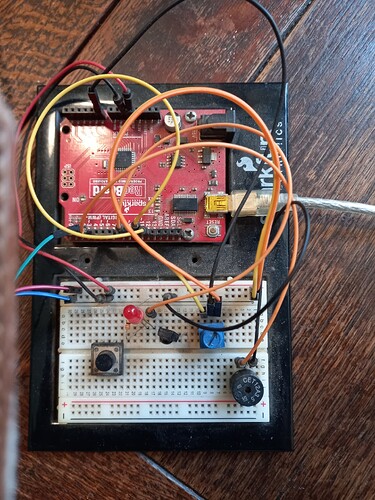Help my arduino might have been spilled on and i cant find out what to i do
I spilled water on my table and the arduino and breadboard might have been damaged,How do i find out
First air dry the board and leave in the open air overnight.
Try the blink sketch. If it fails the board is toast, it that sketch is ok the board might be ok.
The title says 'and breadboard' if that is true, throw the breadboard out.
If it's pure water, and your breadboard isn't poor quality, it should be fine. Just let it dry naturally and thoroughly.
Thanks for replying, i will follow instructions now
I use the starter kit uno r3
To me, that is strange. Why sell, or use, an Uno R3 with a breadboard? They are not incompatible. A fish could, in theory, ride a bicycle. (Ok, not the best analogy, but I hope you understand what I mean.)
But Uno is designed for use with shield PCBs, not breadboards.
The nearest similar board to Uno which is designed for use with a breadboard would be Nano V3.
All of your circuit boards were washed in water and dried during the manufacturing process. So doing it again is no big deal.
you put the sensors, leds, etc you want to drive on the breadboard and duPont wires from the UNO to the breadboard (and back)
Seems like everyone has been doing that for a long time if I trust the zillion Fritzing and Thinkercad images we get here
These boards are not afraid of bath time, as long as there is no electricity going to the board or stored in its devices. After I do a bunch of soldering, I like to apply good amounts of isopropyl alcohol (90%) and scrub with an acid brush. Grease, flux, dirt, water, all get cleaned off as the alcohol lifts and evaporates. Then some time to dry.
To not cause further damage. The breadboard is prone to corrosion as its function is to conduct electricity over bare metal, sandwiched between plastic which will hold any liquid (creating electric paths and further corroding the metal).
Making a "shield" for each project is an excellent way to improve device connection (so many connection issues with breadboards), design (a spacial understanding of components) and soldering skills.
If you spill water or worse, tea, wine etc
- Disconnect
- Many recommend to let it dry, under different forms. Don't. Reason why? Liquids will stick underneath SMD components and when it slowly vaporize, it becomes more concentrated with acid (wine) minerals (water), everything that makes it become more conductive and / or corrosive. So after a day or so, you think it's safe to turn on and that's when damage is done or has been.
- Rinse it off good with IPA as @xfpd wrote. It'll dilute the liquid, and IPA vaporize faster.
- Shake off the IPA + liquid.
- If you got Compressed Air in a can, use that where there's SMD. You'll notice liquid coming out.
- Let it dry.
I do not agree that Uno is just for shields.
Shields are for people with more money than brains, compare the price of an SD shield to an SD module for instance.
And there are not shields for all I have done with an Uno. I know that there is a breadboard shield but it's dinky and expensive!
Uno not using a shield to bootload AVR's.
Was the circuit powered when it got spilled on is the first question with all electronics not sealed/waterproofed.
For extra drying, put it in a sealed bag/box with dry rice or pasta as those will soak humidity very well over hours.
Since inorganic salts are generally more soluble in water than in IPA, 70% IPA would be a better choice than higher percentages. Rinsing in warm water followed by 95% IPA would be a good regimen as the IPA forms a bond with the water ions and helps dry things out when it evaporates, similarly to the way acetone is a drying agent.
Yup, that's the crazy part.
You can also hitch up a donkey to a Ferrari and have it pull the car along the road. All you gotta do is release the parking break. Easy!
Or.... you could use an Arduino that plugs into the breadboard when you want to build a circuit on a breadboard. ![]()
![]()
![]()
You're right. And it doesn't evaporate as quickly.
I use a water-soluble flux for my boards. To clean them, I use hot water with a bit of soap and a scrub brush. Afterward, I thoroughly rinse the boards with hot water, shake off as much water as possible, and then place them in my oven at 150°F for about two hours to dry. Finally, I let them cool. Fortunately, the city provides good water that isn’t loaded with minerals, so it doesn’t leave residue.
If you are using a plug board trash it and use a new one. Example:
I would not call that crazy. I see what you mean and would just call that flexibility. You’ll be using DuPont wires anyway with your breadboard so…
I only use Dupont cables to connect components that I couldn't get a breadboard friendly version of, and couldn't make some kind of breadboard adapter for.
For connecting components on the breadboard, including the Arduino itself, I use solid core wires laid flat on the breadboard:
Yes - you are a pro, no doubt. I wish everyone would be doing that too.



